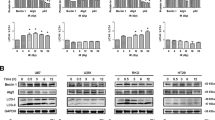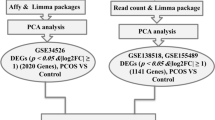Abstract
The p53 protein is known to play a central role in mediating G1 arrest or apoptosis in response to ionizing radiation in some cell types. It has been proposed that the link between p53 and induction of apoptosis is provided in part by p53-mediated upregulation of BAX. In this study, we used the human SW626 ovarian cancer cell line, which lacks functional p53, to further investigate the relationship between wildtype p53, BAX, and apoptosis. SW626 cells expressing a temperature sensitive (ts) p53 mutant did not undergo G1 arrest or apoptosis and did not exhibit enhanced sensitivity to radiation at the permissive temperature of 32°C. The tsp53 protein was functional in these cells as evidenced by rapid induction of p21 at 32°C, but not at 37°C. Interestingly, restoration of wildtype p53 function at 32°C was not associated with BAX upregulation. In addition, stable overexpression of BAX in SW626 cells was not capable of enhancing apoptotic cell death in response to radiation. Thus, failure of p53 to upregulate BAX is not the sole reason for its inability to promote radiation-induced apoptosis in SW626 cells. Taken together, our data suggest that neither p53 nor BAX upregulation is sufficient for the induction of apoptosis in response to genotoxic damage in some cell types.
This is a preview of subscription content, access via your institution
Access options
Subscribe to this journal
Receive 50 print issues and online access
$259.00 per year
only $5.18 per issue
Buy this article
- Purchase on SpringerLink
- Instant access to full article PDF
Prices may be subject to local taxes which are calculated during checkout
Similar content being viewed by others
Author information
Authors and Affiliations
Rights and permissions
About this article
Cite this article
Strobel, T., Swanson, L., Korsmeyer, S. et al. Radiation-induced apoptosis is not enhanced by expression of either p53 or BAX in SW626 ovarian cancer cells. Oncogene 14, 2753–2758 (1997). https://doi.org/10.1038/sj.onc.1201132
Received:
Revised:
Accepted:
Issue date:
DOI: https://doi.org/10.1038/sj.onc.1201132



